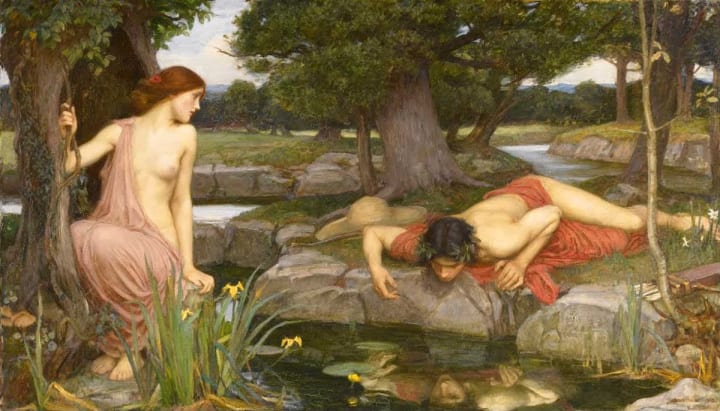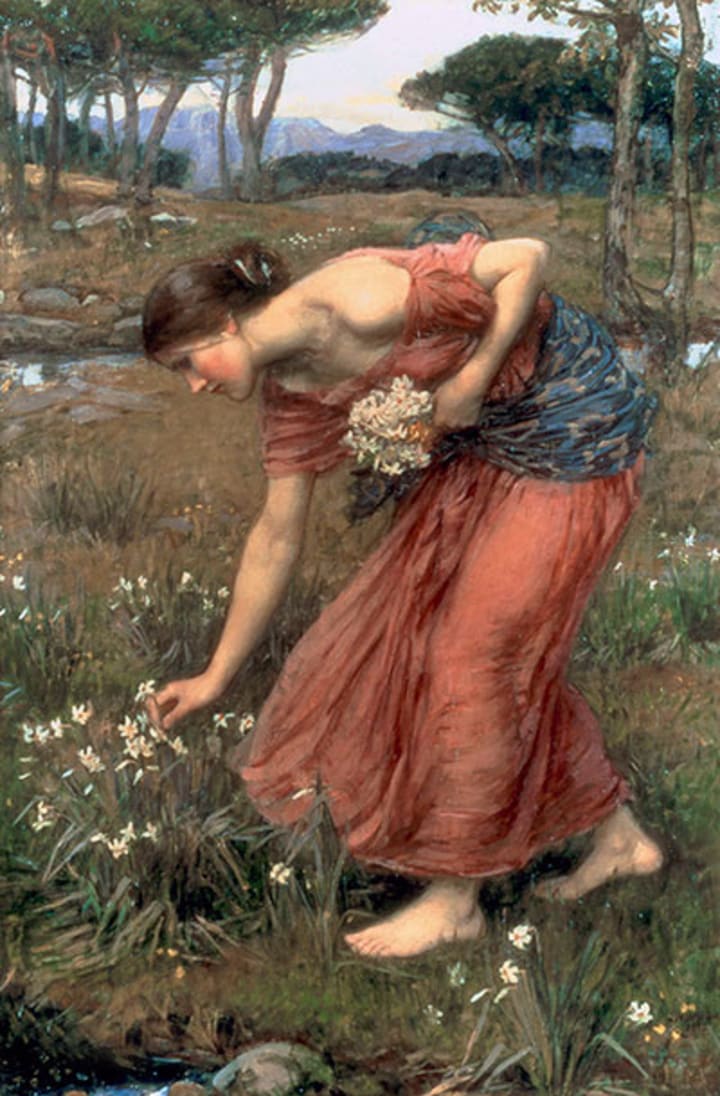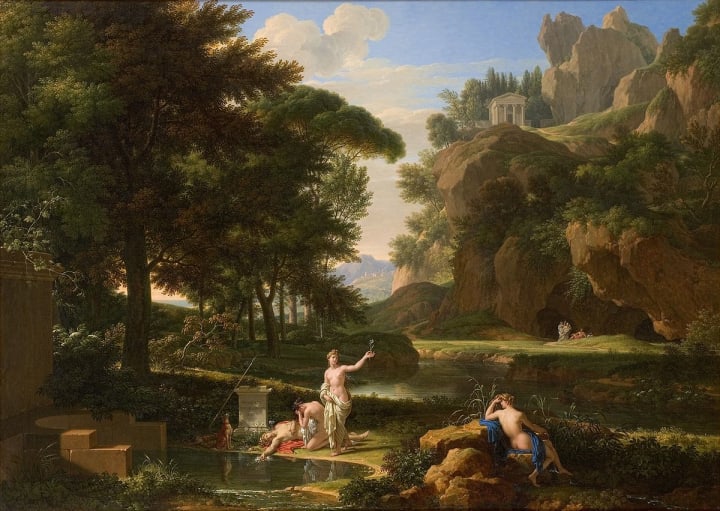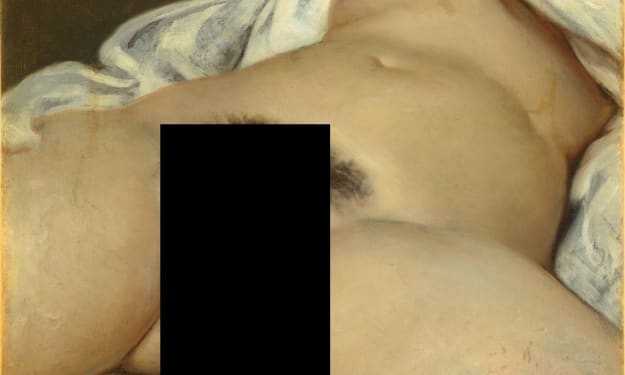Where is your Narcissus?
A small, quick peek into some art history - Part 2

For a man thousands of years old, Narcissus still looks quite good, no? What is it? Retinol? Hyaluronic Acid? The Mediterranean diet? Or is it the soil and the convenient placement of a body of water to feed a lovely little white and yellow flower?
This is my favorite painting of him, and maybe it is a little biased because Caravaggio is one of my favorite painters, but in its essence, I believe it has the best composition of the fabled character.
Caravaggio was an Italian Baroque painter known for his use of chiaroscuro, the technique of contrasting light and shadow to create dramatic effects. This you can see quite easily in the image above. Caravaggio uses the body of Narcissus as the light, while his reflecting demise is in shadows. Life looking at death. Outer self and inner self. Strength and weakness. Our angels and demons. Or whatever else you can interpret.

Narcissus story is a simple one no matter which version you read whether he is a beautiful youth who falls in love with his own reflection in a pool of water.
Or him being the son of the river god Cephissus and the nymph Liriope, who rejects all suitors, including the nymph Echo, and as punishment, the goddess Nemesis causes him to fall in love with his own reflection, leading to his demise.
And which ending do you prefer? Narcissus becoming so enamored with it that he wastes away and dies or the myth that ends with Narcissus's transformation into the narcissus flower, also known as the daffodil. A type of immortality that echo's the story of Apollo and Hyacinth.

But no matter which story you read, Caravaggio's piece symbolizes the very essence of the old tale. You can see it in the composition: Narcissus's hands are connected to his reflected ones, creating a loop between himself and his weakness—a never-ending cycle. Ouroboros.
And it is only Narcissus himself who can break the connection.
It makes me think, and in some ways, I can see myself reflected. Whether it is my weaknesses or my strengths, I too, and I'm sure many of you, have created a cycle that, if not broken, can only lead to demise

Caravaggio's piece is simple and another piece of blunt art I truly enjoy. The symbolism in his art shows rather than tells. And I can go deeper into the faults of loving one's self too much, of believing you are better and more beautiful and powerful. But I think we can all see the effects whether in person or through the billions of little videos of the "self" that have become so very common.
But beyond its cautionary theme, what captivates me is Caravaggio's keen understanding of the essence of the story, of human nature. His composition speaks with Narcissus's intertwined hands symbolizing a perpetual cycle of self-absorption. And that absorption's cause can mold and change and twist into anything you want or fear or despise. He looks into his reflection and see's himself, but is it the same person who gives that reflection existence?
So, as you gaze upon this painting, ask yourself: do you see your own reflection? Or maybe its echoes? Perhaps not in physical beauty, but in other aspects of life. Do you recognize the patterns of human nature, the struggles, and the vulnerabilities? Do you see our future? Your future? Or do you see it merely as a tale of a beautiful yet flawed being.
Although, lets say you see nothing. You find yourself unaffected by the story or the painting, devoid of any contemplation, then I pose this question: where is your Narcissus?
About the Creator
K. Kocheryan
I write, delete, write, and on most days, delete again.






Comments (1)
Your questions provoke a lot of thought, especially since my initial impression when looking at the photo wasn't to reflect on myself. My initial impression was "what a sad existence he lived- only obsessing over himself when there was so much happening around him". I know of his story, which is why your title drew me in. But maybe that was why my response was objective and not subjective. Since you asked how the painting affected my self-image, I'd say now that I'm looking, perhaps I live a sad existence as well. I'm constantly avoiding my reflections, accepting that I can't change anything about my appearance, but I'm constantly obsessing over what I could change internally. How I could improve as a person. I might be fixating to the point I'm erasing the unique aspects that made me who I am, just to please others.